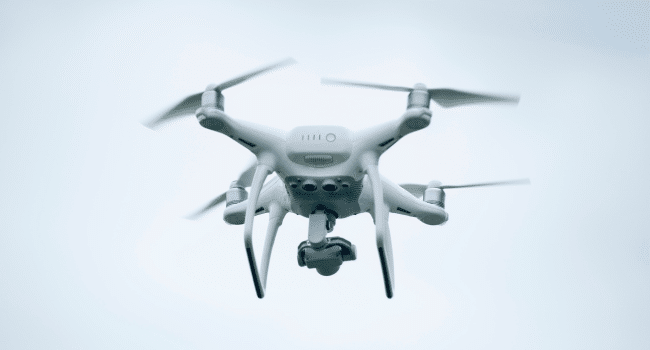Table of Contents
Amidst technological advancements, drones emerge as indispensable tools, elevating safety protocols. This exploration delves into their transformative role in risk mitigation, inspections, and fostering secure work environments. From surveying hazardous areas to real-time monitoring, drones redefine safety standards.
Embark on a journey through the skies as we unveil the myriad ways these aerial guardians contribute to heightened safety, ensuring a secure and efficient work environment. Stay abreast of the latest in drone technology with Droidmen, unlocking insights on their revolutionary impact in reshaping workplace safety.
Aerial Inspections for Enhanced Safety
Revolutionizing safety inspections, drones from dronevideos offer an aerial perspective for detailed assessments of infrastructure, equipment, and challenging locations. This proactive approach strengthens preventive maintenance, detecting potential risks before escalation and fortifying overall workplace safety. By leveraging their capabilities, drones contribute to a more vigilant and responsive safety strategy, ensuring the early identification and mitigation of hazards, ultimately fostering a safer work environment.
Real-time Monitoring and Surveillance
Providing real-time monitoring capabilities, drones facilitate prompt responses to dynamic situations. Their efficiency in covering expansive areas enhances surveillance, aiding in early incident detection, swift response, and efficient crisis management. Leveraging their agility and advanced technology, drones play a vital role in bolstering situational awareness, ensuring a proactive approach to addressing incidents and contributing significantly to the effectiveness of crisis management protocols in diverse operational environments.
Drone Technology in Emergency Response
In emergency response scenarios, drones assume a pivotal role by rapidly delivering essential supplies, conducting assessments of disaster-stricken areas, and assisting in search and rescue operations. Their invaluable agility and versatility equip them as indispensable tools for addressing unforeseen challenges. With the capability to navigate challenging environments efficiently, drones enhance the effectiveness of emergency response efforts, providing crucial support in times of crisis and contributing to the overall efficiency of disaster management operations.
Automated Safety Assessments in Hazardous Areas
Equipped with sensors and cameras, drones autonomously navigate hazardous environments, conducting safety assessments without human exposure to potential risks. This automation ensures meticulous inspections in challenging conditions, elevating safety protocols in high-risk areas. By utilizing advanced technology, drones mitigate the need for human presence in perilous settings, enhancing overall safety measures and providing a reliable solution for thorough assessments in environments where human access may pose significant risks.
Training and Education for Drone Integration
Efficiently integrating drones into workplace safety necessitates comprehensive training initiatives. This entails educating personnel on drone operation, maintenance, and safety protocols. Ensuring staff proficiency empowers organizations to capitalize on the full spectrum of benefits offered by drone technology. This approach not only optimizes operational efficiency but also ensures a secure and compliant working environment, aligning with evolving safety standards and fostering a culture of responsible drone use within the organizational framework.
As technology continues to advance, the integration of drones for construction becomes a pivotal aspect of this transformative landscape. The versatility showcased in aerial inspections and real-time surveillance align seamlessly with the construction industry’s needs, emphasizing drones as integral contributors to enhanced safety, efficiency, and innovation in the evolving workplace.
Read More on KulFiy
